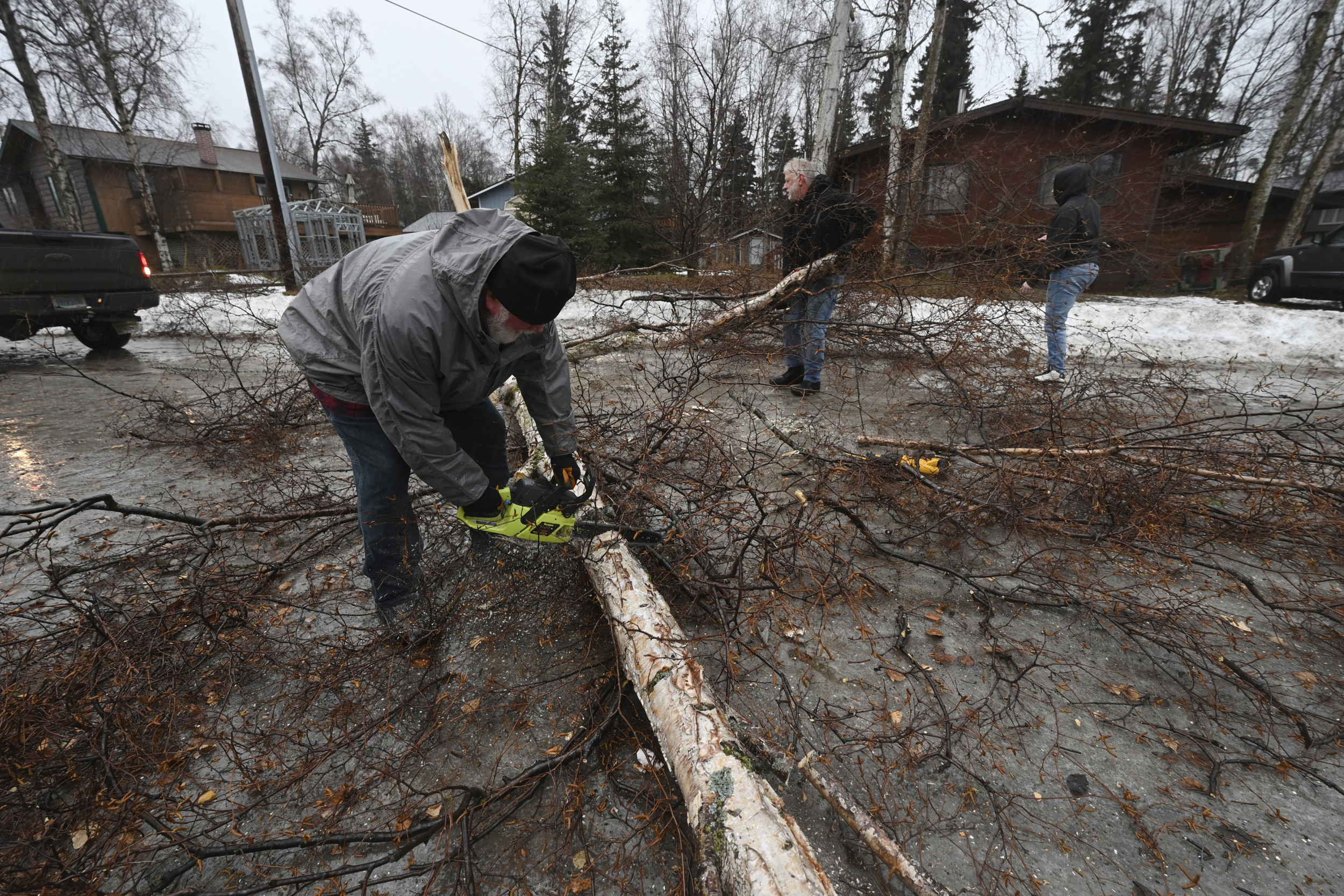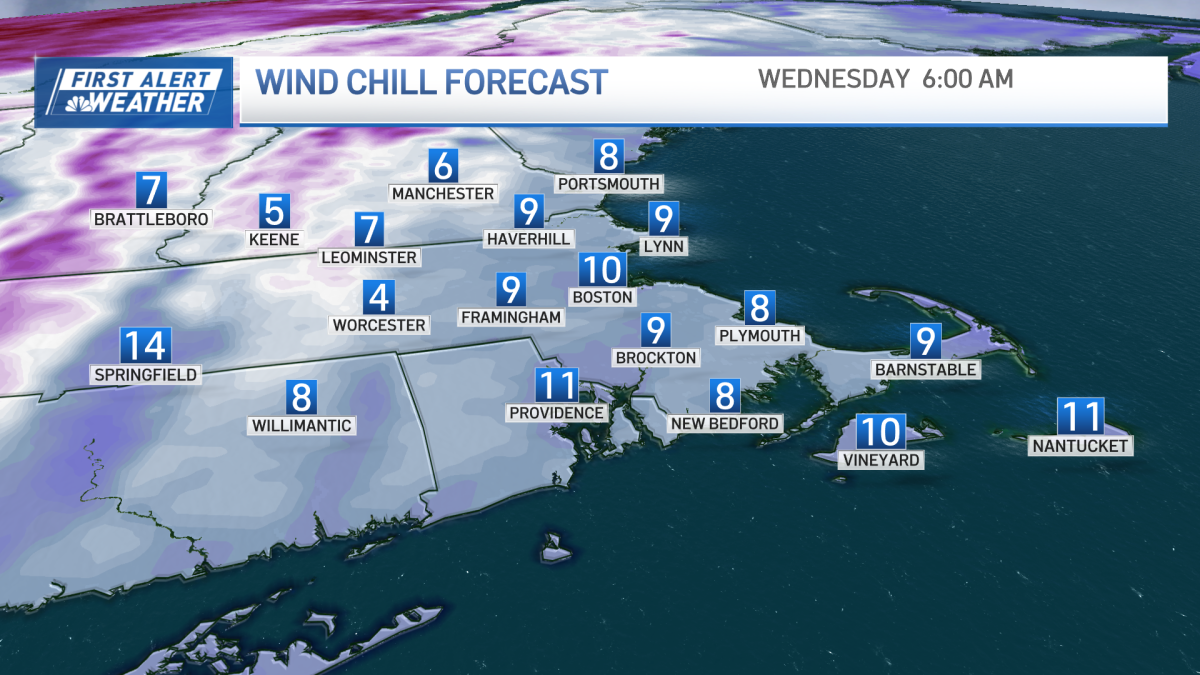Alaska
UAS Ketchikan Acquires Dedicated Vehicle for the Maritime Training Center – Alaska Native News


Alaska
Anchorage, Alaska hit by hurricane-force winds, structures damaged across city

Associated Press
Hurricane-force winds cause widespread damage in Alaska’s largest city
Thousands of residents across Alaska’s largest city were still without power Monday, a day after a powerful storm brought hurricane-force winds that downed power lines, damaged trees, forced more than a dozen planes to divert, and caused a pedestrian bridge over a highway to partially collapse. A 132-mph (212-kph) wind gust was recorded at a mountain weather station south of Anchorage. A large low-pressure system in the Bering Sea brought the high winds, moisture and warmer than average temperatures — in the low 40s Fahrenheit (slightly over 4.4 degrees Celsius) — to Anchorage on Sunday, said National Weather Service meteorologist Tracen Knopp.
Alaska
Thousands without power in Alaska after hurricane-force winds hit

Thousands of residents in Anchorage, Alaska, faced widespread devastation and power outages Monday after hurricane-strength winds battered the city on Sunday.
Why It Matters
This latest incident comes as power outages across the United States have become a growing concern as extreme weather events increase in frequency and intensity, often leaving millions of Americans in precarious situations. Hurricanes, wildfires, ice storms and heatwaves have caused widespread disruptions, highlighting the vulnerability of aging electrical grids to severe conditions.
Prolonged outages not only hinder daily life by cutting off access to heating, cooling and essential appliances but also pose significant risks to public health, particularly for the elderly and those with medical conditions reliant on powered devices.
What To Know
The Anchorage storm, which began Sunday, delivered gusts reaching 132 mph at a mountain weather station south of the city, according to the National Weather Service. Within Anchorage itself, winds hit 75 mph, toppling trees, scattering debris and partially collapsing a pedestrian bridge over the Seward Highway, the city’s main southern thoroughfare.
At the height of the storm, 17,500 customers were without power, according to Julie Hasquet, spokesperson for Chugach Electric Association. As of Monday, roughly 5,700 homes remained offline with full restoration expected to stretch into Tuesday.
Bill Roth/Anchorage Daily News/ AP
The storm’s chaos wasn’t limited to neighborhoods. Anchorage’s airport, a vital hub for passenger and cargo traffic, saw significant disruptions. Winds forced 13 aircraft, including a U.S. Air Force plane, to divert to Fairbanks, which sits nearly 360 miles away.
On the ground, emergency crews scrambled to clear bridge debris, which had obstructed traffic on the highway. However, no injuries were reported when the side fencing and roof of the bridge fell onto the four-lane divided highway on Sunday. Traffic was rerouted and crews removed the debris.
Alaska Department of Transportation spokesperson Shannon McCarthy pointed to the winds as the probable cause of the bridge failure. However, structural engineers are investigating to determine the full extent of the damage.
Meanwhile, the storm marked a rare convergence of high winds, warmer-than-average temperatures and moisture from a low-pressure system in the Bering Sea, said National Weather Service meteorologist Tracen Knopp. Anchorage saw temperatures in the low 40s Fahrenheit, unusual for mid-winter.
What People Are Saying
Alaska Department of Transportation spokesperson Shannon McCarthy said: “The winds were the leading cause, but our bridge engineers will be out there today and may be able give us a more comprehensive analysis of what happened.”
Julie Hasquet, a spokesperson for Chugach Electric Association, said some customers may not have power back on until Tuesday. She said: “When our crews show up for repairs, they don’t know what they’re going to find.”
Resident Steven Wood told Anchorage television station KTUU about how he and his family was watching the winds blow things around the yard Sunday morning when they saw their neighbor’s roof partially blow off and head right toward them.
“All of a sudden, I see the roof start to peel off, and all I can yell is, ‘Incoming! Everybody run!’” Wood said.
What Happens Next
Cleanup efforts are underway in Anchorage as the city begins recovering from the powerful storm.
This article includes reporting from The Associated Press.
Alaska
Genetic diversity in Alaska’s red king crab may provide climate change resilience

New genetic research on the Alaska red king crab reveals previously undiscovered diversity among different regions, suggesting the species is more resilient to climate change and changing ocean conditions.
Maintaining genetic diversity within and among populations is vital to ensure species are resilient to challenging conditions. Without it, a single disease or set of conditions—such as a prolonged change in ocean acidification—could drive a species to extinction.
Fortunately, new research has revealed more genetic diversity across Alaska’s red king crab populations than originally documented. This suggests that the species will be more resilient in the face of changing conditions like ocean warming. However, any efforts to enhance red king crab populations need to be careful not to affect this genetic diversity.
King crab in Alaska
Historically, the red king crab fishery was Alaska’s top shellfish fishery. It’s embedded in the culture of Alaska’s working waterfronts and king crabs have been the centerpiece of holiday feasts around the world. However, the red king crab fishery collapsed in the 1980s. Since 1983, most populations have been depressed statewide and the Gulf of Alaska fishery remains closed.
Wes Larson is co-author of the research published in Evolutionary Applications and the genetics program manager at the NOAA Alaska Fisheries Science Center. He reflects, “When it comes to understanding crab biomass declines and how to recover populations, we need to better understand population structure and local adaptation. There are a lot of concerned and invested fishermen, processors, and community members getting more engaged in these issues and it’s propelling new and innovative research.”
To dig into this need, Larson and a team of collaborators embarked on a study to generate whole genome sequencing data on red king crab in different locations across Alaska. The benefit of whole genome sequencing over previous methods is that it’s akin to reading the full story of an organism’s makeup instead of just a chapter or two. This holistic approach offers more robust analysis in order to tease apart similarities and differences between locations.
New genetics research in Alaska
Traditionally, information about commercially important species comes from fisheries-dependent data (collected on commercial fishing vessels) or independent surveys (from scientific research vessels). From these, we gather data on abundance, size, sex, reproductive status, diet, etc.
Genetics tools help to fill in the information gaps from traditional surveys, and can be used to:
- Define stock of origin
- Assess local adaptation
- Document genetic diversity and inbreeding
Whole genome sequencing builds on past methods by enhancing our ability to detect important differences between populations at finer scales.
Red king crab live in diverse environments—from coastal bays in the north, to open sea shelves in the Bering Sea. They also live in small bays and fjords fed by glacial melt in Southeast Alaska and the Gulf of Alaska. King crab in Alaska generally inhabit the following five regions:
- Southeast Alaska
- Gulf of Alaska
- Aleutian Islands
- Eastern Bering Sea
- Norton Sound / Chukchi Sea.
Previous genetic studies have hypothesized that king crab from these regions are split into three genetic groups:
- Southeast Alaska
- Gulf of Alaska / East Bering Sea
- Aleutian Islands / Norton Sound.
However, these studies used older genetic techniques, which may not provide the resolution necessary to accurately define genetic structure. The current study reinvestigated the genetic structure of the red king crab in all five regions using high-resolution data derived from whole genome sequencing.

The results of this study were revealing and informative. Scientists found substantial genetic structure within populations and genetic diversity between regions. In some cases, scientists observed this diversity between populations separated by only a few hundred kilometers.
“Crabs have pelagic larvae, so this is very surprising given the potential for ocean currents to distribute these larvae long distances,” said Larson. “However, these populations do not seem to be mixing and have become genetically isolated.”
Ultimately, the previous hypothesis of three genetic groupings was revised by this whole genome sequencing study. This updated method provided more clarity of fine-scale genetic differences than previous methods. The data indicate that there are six, possibly seven, genetically distinct populations:
- Southeast Alaska
- Gulf of Alaska
- Aleutian Islands
- Bristol Bay
- Pribilof Islands
- Norton Sound / Chukchi Sea
Data showed previously unrecognized differences between the Gulf of Alaska and East Bering Sea regions. And the East Bering Sea region is split into separate Bristol Bay and Pribilof Islands populations.
Researchers also found that the Aleutian Islands and Norton Sound/Chukchi Sea regions are unique. Data suggests that Norton Sound and Chukchi Sea may be distinct as well. However, further research is required to determine if this is the case.
Scientists attribute this genetic diversity to a combination of factors including populations deriving from different glacial refugia. These are areas that remained ice-free during the lce Age. And more recently, natural selection (genetic changes driven by adaptation) and genetic drift (genetic changes that are random) likely contributed to this diversity. The research documented evidence of local adaptation in most populations.
Fisheries management implications
The scientists’ approach to sequence the whole genome of red king crabs was a more detailed method using orders of magnitude more data than previous studies.
It also confirmed that fisheries are being managed effectively by region in Alaska. For example, crab stocks in the Gulf of Alaska, Aleutian Islands, Bristol Bay, and Pribilofs Islands regions are each managed separately. Prior to this new research, the Bristol Bay and Pribilof Islands were not found to be genetically distinct. This new understanding reinforces that we should continue to manage them separately.
Understanding population structure, and these newly discovered genetic signals of local adaptation, is also important for preventing overfishing on genetically unique populations. And it’s critical to provide information on how local adaptations influence responses to different climatic conditions.
We may find that some populations have the potential to fare better in future climate conditions that are likely as climate change progresses. Genetics can also reveal shifts in population distribution. Some shifts may already be underway in the Bering Sea as the North Pacific warms.
Finally, with the Gulf of Alaska population being depressed, scientists would expect a higher potential for inbreeding and lower genetic diversity. However, researchers found no evidence of reduced diversity, meaning genetic health did not suffer as the population declined. This foundation of genetic diversity means that genetic factors should not limit recovery.
This research also provides important data that can be used to inform broodstock selection for red king crab enhancement programs. Enhancement programs raise young crabs in hatcheries and release them into the wild to enhance the population.
Given the genetic diversity of red king crab across Alaska, it’s vital to prioritize local broodstock for enhancement before sourcing from elsewhere. This helps to keep genetic diversity intact and ensures that the genetic integrity of locally adapted populations is not jeopardized.
More information:
Carl A. St. John et al, Whole Genome Sequencing Reveals Substantial Genetic Structure and Evidence of Local Adaptation in Alaskan Red King Crab, Evolutionary Applications (2024). DOI: 10.1111/eva.70049
Provided by
NOAA Headquarters
Citation:
Genetic diversity in Alaska’s red king crab may provide climate change resilience (2025, January 13)
retrieved 13 January 2025
from https://phys.org/news/2025-01-genetic-diversity-alaska-red-king.html
This document is subject to copyright. Apart from any fair dealing for the purpose of private study or research, no
part may be reproduced without the written permission. The content is provided for information purposes only.
-

 Politics1 week ago
Politics1 week agoWho Are the Recipients of the Presidential Medal of Freedom?
-

 Health1 week ago
Health1 week agoOzempic ‘microdosing’ is the new weight-loss trend: Should you try it?
-
/cdn.vox-cdn.com/uploads/chorus_asset/file/25822586/STK169_ZUCKERBERG_MAGA_STKS491_CVIRGINIA_A.jpg)
/cdn.vox-cdn.com/uploads/chorus_asset/file/25822586/STK169_ZUCKERBERG_MAGA_STKS491_CVIRGINIA_A.jpg) Technology5 days ago
Technology5 days agoMeta is highlighting a splintering global approach to online speech
-

 Science3 days ago
Science3 days agoMetro will offer free rides in L.A. through Sunday due to fires
-
/cdn.vox-cdn.com/uploads/chorus_asset/file/25821992/videoframe_720397.png)
/cdn.vox-cdn.com/uploads/chorus_asset/file/25821992/videoframe_720397.png) Technology6 days ago
Technology6 days agoLas Vegas police release ChatGPT logs from the suspect in the Cybertruck explosion
-

 Movie Reviews1 week ago
Movie Reviews1 week ago‘How to Make Millions Before Grandma Dies’ Review: Thai Oscar Entry Is a Disarmingly Sentimental Tear-Jerker
-

 News1 week ago
News1 week agoTrump Has Reeled in More Than $200 Million Since Election Day
-

 Movie Reviews1 week ago
Movie Reviews1 week agoMovie Review: Millennials try to buy-in or opt-out of the “American Meltdown”














